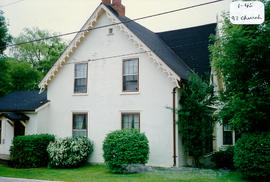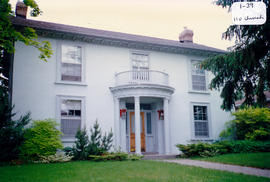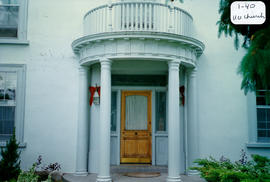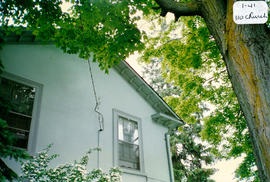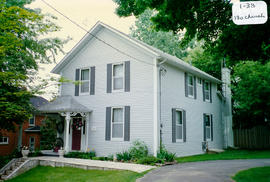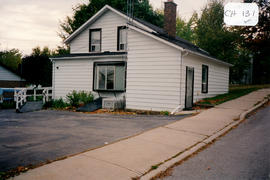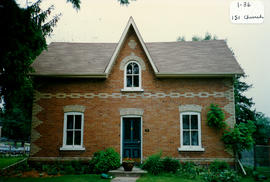97 Church Street - The William Melbourne House
- CA BWGPL GJ-HB-2017-03-18-03
- Item
- 1996
Part of George Jackson fonds
The William Melbourne House is located at 97 Church St. (at the corner of Church and Frederick Streets). It was built in the Gothic Revival style in the 1870-80’s by Bill Curry. The 1½-storey, three-bay ‘cottage’ has large window openings with high floor to ceiling heights and a steeply-pitched, gable roof. There is a centre gable over the entrance. The building has a rectangular plan and a centre entrance hall. A ‘Regency Style’ entrance has arched tracery in the multi-paned transom and sidelights. The shallow pediment, entablature, and pilasters framing the entrance indicate a neoclassical influence. The bay windows at the ground floor have three-sided, angular projections and a hip roof. A semi-circular, arched window with a transom of multi-paned fanlights is located fully within the centre gable at the second floor as well as decorative gingerbread along the eaves and verges. There is a wood ‘drop’ or pendant suspended from the mid-point of the centre gable. The finial was originally above the gable. The cornice around the roof of the bay windows is decorated with dentils. Paired brick chimneys (with stacks set on the diagonal) are found at each side of the house. The house has wood frame construction with painted stucco cladding (1933) on the original wood cove siding. It has a stone foundation. The double-hung windows and storm entrance door are not original. According to the 2000 inventory, the house is in excellent condition with many original features. The gingerbread trim was removed and the stucco was replaced with vinyl siding after the inventory. (1, 3)
George Jackson


